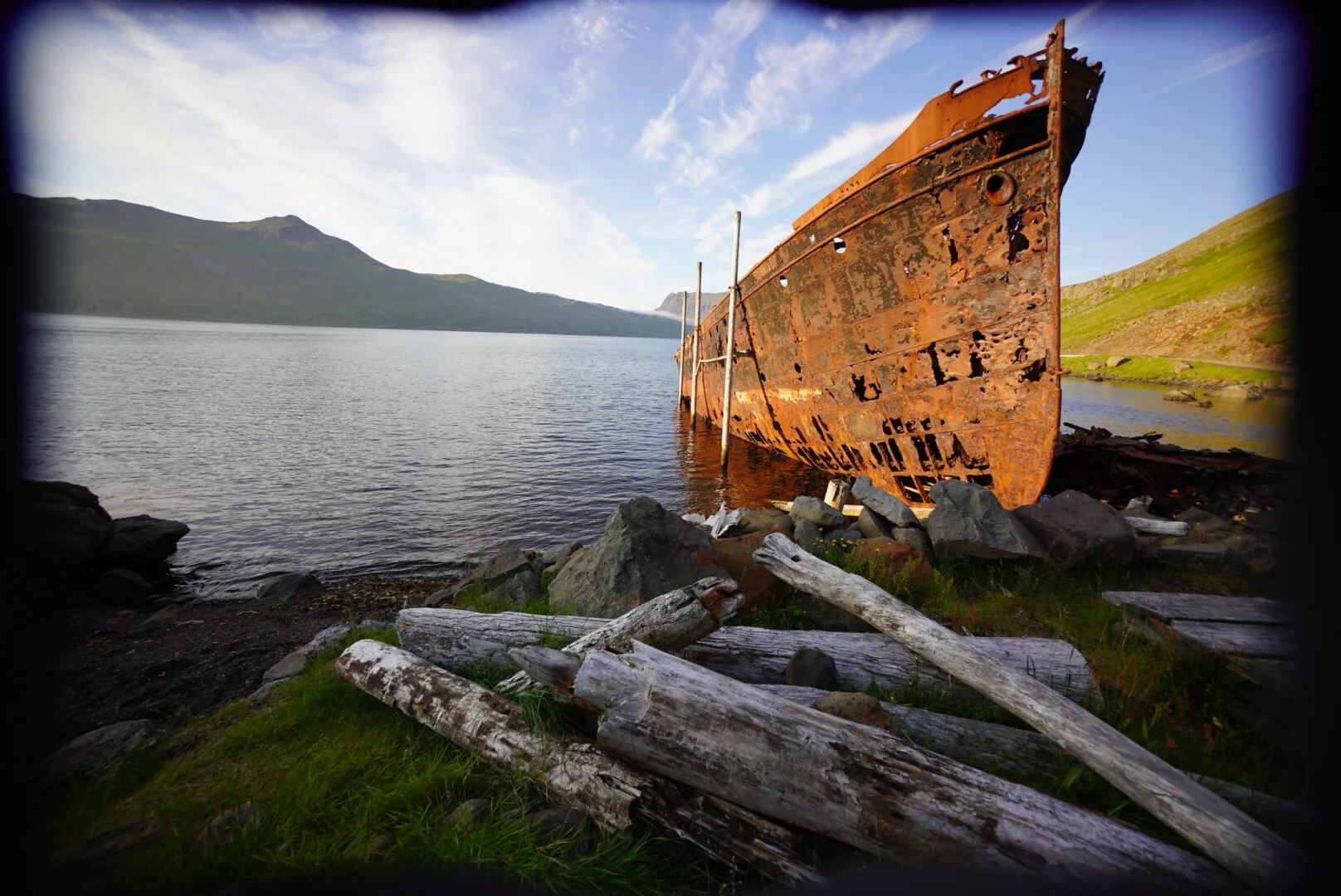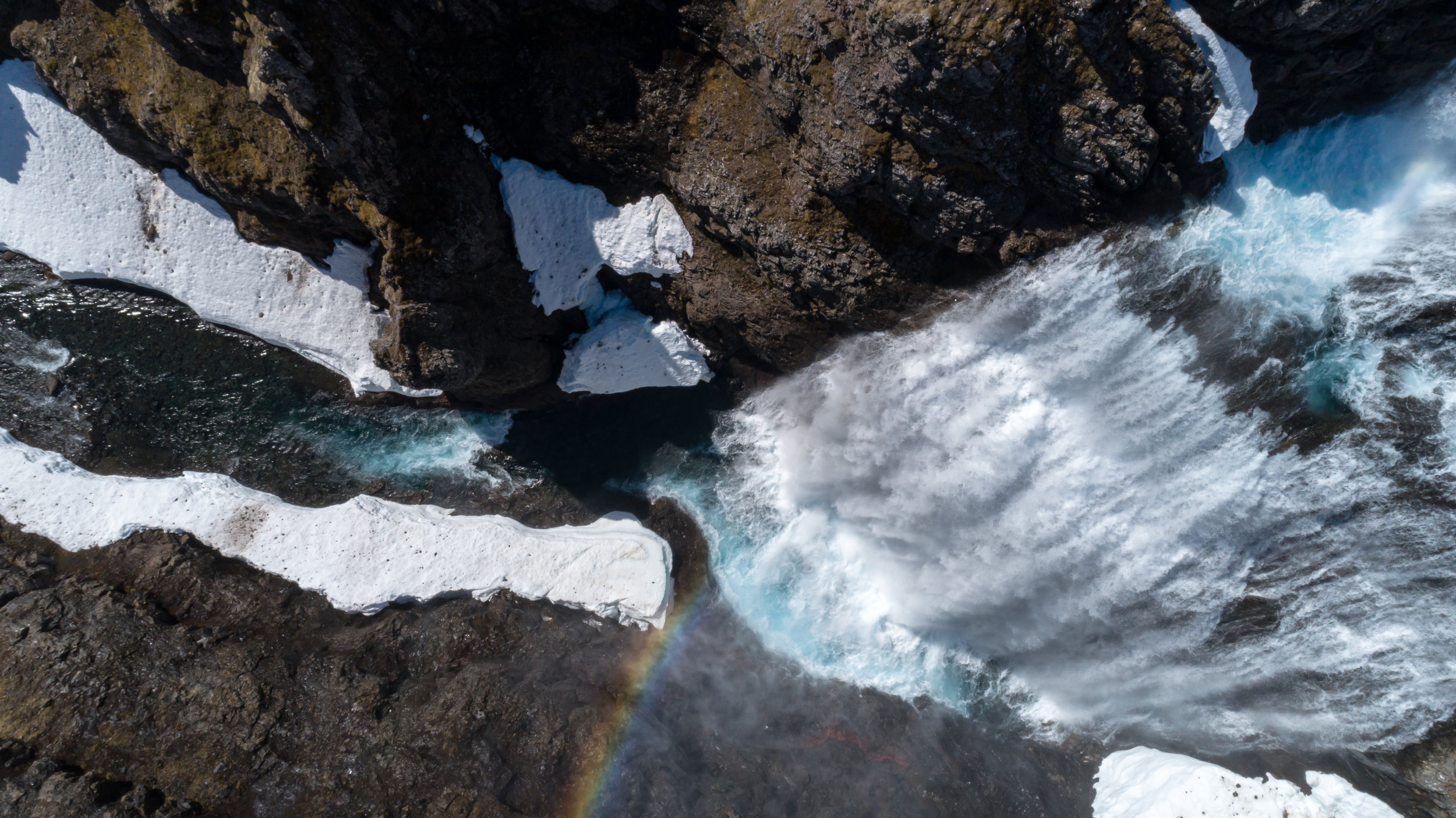About the Project
Reimagining the Westfjords challenges several proposed dams and hydroelectric power plants that would have major negative impacts on communities and wilderness areas in the Westfjords of Iceland.
Located in the Westfjords, the remote Strandir is one of Europe‘s largest wilderness areas—comprised of majestic waterfalls, unspoiled coastline, pristine heaths and small lakes. This area has immense untapped hydroelectric potential, but harnessing this “green energy” would effectively destroy this unique, untouched wildernesses with the construction of roads, power lines & dams that divert water away from riverbeds and into vast underground tunnels to harness the water’s power.
Reimagining the Westfjords fights for the region's future by raising awareness, mobilizing public opinion, empowering politicians and proposing economic solutions that better align with local and global ecological concerns.
Photo: Ólafur Már Björnsson
If dams are built, many waterfalls will be impacted.
The mighty Drynjandi Waterfall will become a trickle.
Some falls may no longer reach the sea.
The ÓFEIG Conservation Society: What’s in a name?
ÓFEIG is the pro bono conservation organization we work with based in Reykjavík, Iceland, with a name steeped in history, a little bit of magic and a whole lotta woman power.
The word ófeigur is used to describe someone who lives eternally or is a survivor, spared by fate. In this case, it also refers to the area being protected—the Ófeigsfjörður Heath—named after the region's first settler, Ófeigur, from Norway. The feminine form of ófeigur is ófeig, and while this word doesn’t technically exist in the Icelandic language, it’s a play on words, with a magical sound to it that honors the women involved with this work. And, women do play a huge role.
The organization has a female founder/lawyer/chair and the majority of board members are female. Women from many organizations have been deeply involved with the discovery and documenting of important information about the area under threat. And, this work is built on a solid foundation, with the idea of mapping and protecting wilderness in Iceland initiated in the 90s and supported by the Women’s List, a feminist political party at the time. More recently, a nationwide survey from 2018 showed that only 16% of Icelandic women asked supported the proposed Hvalá Power Plant (compared to 38% of men asked).
The ultimate goal of the project is to establish the region as a protected wildland reserve & encourage the world to experience it in a sustainable way.
Social & Environmental Impacts
Protection of Strandir wilderness, support for local communities and building of the power plants cannot coincide. It is projected that the hydroelectric project may bring short-term local benefits during the building phase, but impact the ecosystem so significantly as to eliminate long-term prospects for ecotourism and similar business development in the area.
This issue extends far beyond the region. The money and beneficiaries of the hydroelectric project largely exist outside of Iceland. In the face of global climate change, renewable energy is important, but vast wilderness areas like the Strandir represent important carbon sinks and provide crucial habitat for flora and fauna to adapt to our changing world.
The question of wilderness for wilderness sake is one that arises often in this project, but there are innumerable benefits associated with protection, both social & environmental.
Rare fossils have been discovered in the proposed development area.
Fossils are unique because they have both social and environmental significance.
The Westfjords have the oldest geology in Iceland, around 10-16 million years old. These fossils, called trjábolaför, were formed millions of years ago when Iceland’s climate was very different. Volcanic eruptions produced lava that covered trees and left holes once the wood burned and rock solidified.
Fossils are protected in Iceland—it’s a criminal offense to disrupt or remove them. So, when our team and the Icelandic Institute of Natural History discovered at least 70 of these trjábolaför, we knew this was big. Geologists were only able to explore a bit of the proposed development area, along with the help of locals who’d known about the fossils for ages. So, there are likely many more trjábolaför. The National Environment Agency is also aware of this discovery.
Fossil Photo: Verkís: Trjábolaför við Hvalá. October 2019, read the full report here.
A challenge identified early in this project was that it can be difficult to get people to care about a place they can’t get to easily.
Sure, this place is worth saving regardless of whether you can see it with your own eyes, but we knew that getting more people into the Westfjords, and especially the Hvalá area, could only help our cause.
So, we worked with our partners in Iceland to create this hiking map. Complete with information about the region’s history on the reverse, this printed map is available locally via the Icelandic Touring Association and for anyone interested in visiting the area’s many waterfalls, fossils and breathtaking vistas.
Eco-tourism presents an economic future that supports the local environment and the communities that call it home. As more people experience the Hvalá area firsthand, the more we anticipate awareness and a desire to protect the area to expand. This new map will help people better understand what’s at risk of being lost to dams and hydroelectric power plant projects.
Want a copy in English? Download here.
A new hiking map makes the area easier to access and enjoy responsibly.
On the Blog
In the News
Controversial Dam Project In Westfjords Set On Ice | Reykjavik Grapevine | MAY 19 2020
This untouched nature needs to be spared | Iceland Review | JUL 13 2019
Permit for Hydropower Plant in West Fjords Contested by Environmentalists | Iceland Monitor | JUL 9 2019
Songs Of The Dammed: Reprise | The Reykjavík Grapevine | JUL 8 2019
Songs Of The Dammed: Hvalárvirkjun And The Future Of Árneshreppur | The Reykjavík Grapevine | JUL 13 2018
Plans to destroy unique waterfalls in an abandoned fjord meets stiff resistance | Iceland Magazine | JUL 3 2017
Important victory for conservationism: Waterfalls in Skjálfandifljót river to be protected | Iceland Magazine | APR 1 2016
See the spectacular waterfalls in Skjálfandi river which would to be sacrificed for more electricity | Iceland Magazine | SEP 12 2015



























